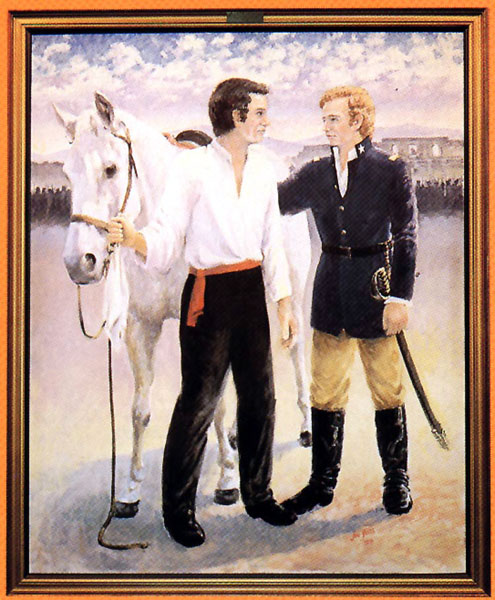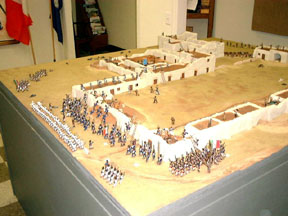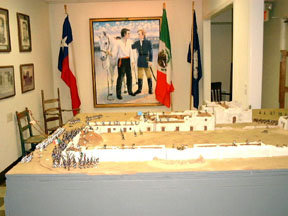Remember the Alamo?
Remember the larger-than-life heroes of that historic and pivotal battle of the Texas Revolution? Names such as David Crockett, William Barret Travis, Jim Bowie and James Butler Bonham come to mind.
Did you know that, out of all those valiant men who decided to make their final stand at the Alamo, the birthplace of only one has been preserved?
The home of James Butler Bonham stands today in Saluda, South Carolina, thanks to the efforts of the Saluda County Historical Society.
The Bonham home, officially known by its original name, Flat Grove, is on the National Register of Historic Places.
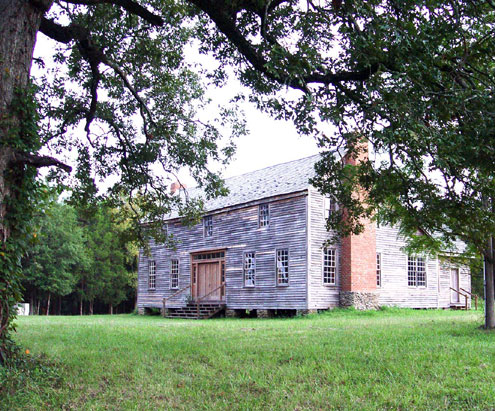
"It was about to fall in when the grandson of the last owners to live in it gave the house and two acres of land to the historical society," explains Bela Herlong, Ph.D, a member of the Saluda County Historical Society. "We have raised the money to save it from deterioration and to restore it so that it will last for a long time."
James Butler Bonham was born 1807 in what was then known as Redbanks, Edgefield County, South Carolina -- present-day Saluda County, South Carolina. The Handbook of Texas has an interesting paragraph regarding Bonham's college days and early career:
Bonham entered South Carolina College (later the University of South Carolina) in the fall of 1823 but never graduated. During his senior year he led a student protest against the poor food served at the college and the obligation of students to attend class in bad weather. He and a number of other students, perhaps the entire senior class, were expelled. Bonham took up the study of law and began practicing in Pendleton, South Carolina, in 1830. On one occasion he caned an opposing lawyer who insulted Bonham's female client. When ordered to apologize by the judge, Bonham threatened to tweak the judge's nose and was promptly sentenced to ninety days for contempt of court.
Bonham would become a captain in the Charleston artillery company and also served as an aid to South Carolina governor James Hamilton, which earned him the rank of Lt. Colonel, before moving his law practice to Montgomery, Alabama. After leading a spirited rally in Mobile, Alabama in October 1835 to drum up support for the Texas cause, Bonham was elected by Mobile residents to deliver their resolutions of support to Sam Houston. Hurriedly enlisting a 30-man volunteer force known as the Mobile Grays, Bonham headed to Texas.
Bonham arrived in Texas in November 1835 and the following month he wrote Sam Houston to volunteer his services. Bonham said he wanted no pay, land or rations in return and Houston was evidently moved by the spirit of this 28-year-old South Carolina native.
Again, according to the Handbook of Texas:
On January 11, 1836, Houston recommended to James W. Robinson that Bonham be promoted to major, for, "His influence in the army is great–more so than some who `would be generals.'" Bonham probably traveled to San Antonio de Béxar and the Alamo with James Bowie and arrived on January 19, 1836.
It was the dead of winter in San Antonio.
Bonham wouldn't live to see how beautiful spring is in Texas.
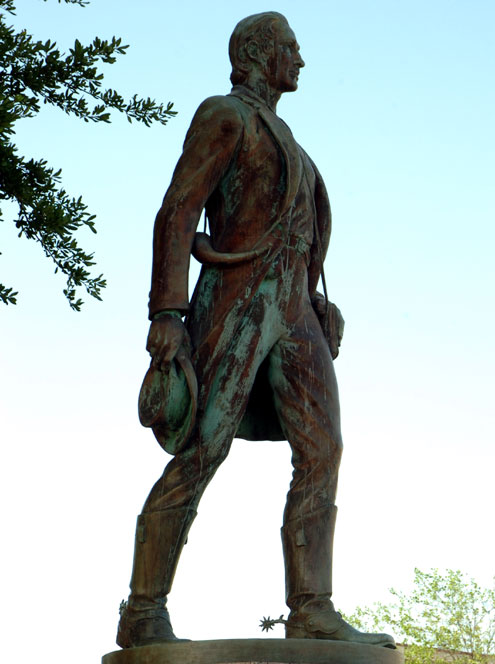
To be continued...
Editor's note: This short series owes much to the knowledge and gracious assistance of Ralph Shealy, editor of the Saluda Standard Sentinel, Bela Herlong, Ph.D, and the Saluda County Historical Society. As we will learn in part two, most Texans don't understand the vital role Saluda County, South Carolina played in the Battle of the Alamo, and it is doubtful that most residents of Bonham realize that the homeplace of their town's namesake still stands, thanks to our friends in Saluda. Mere words could not convey our gratitude.
